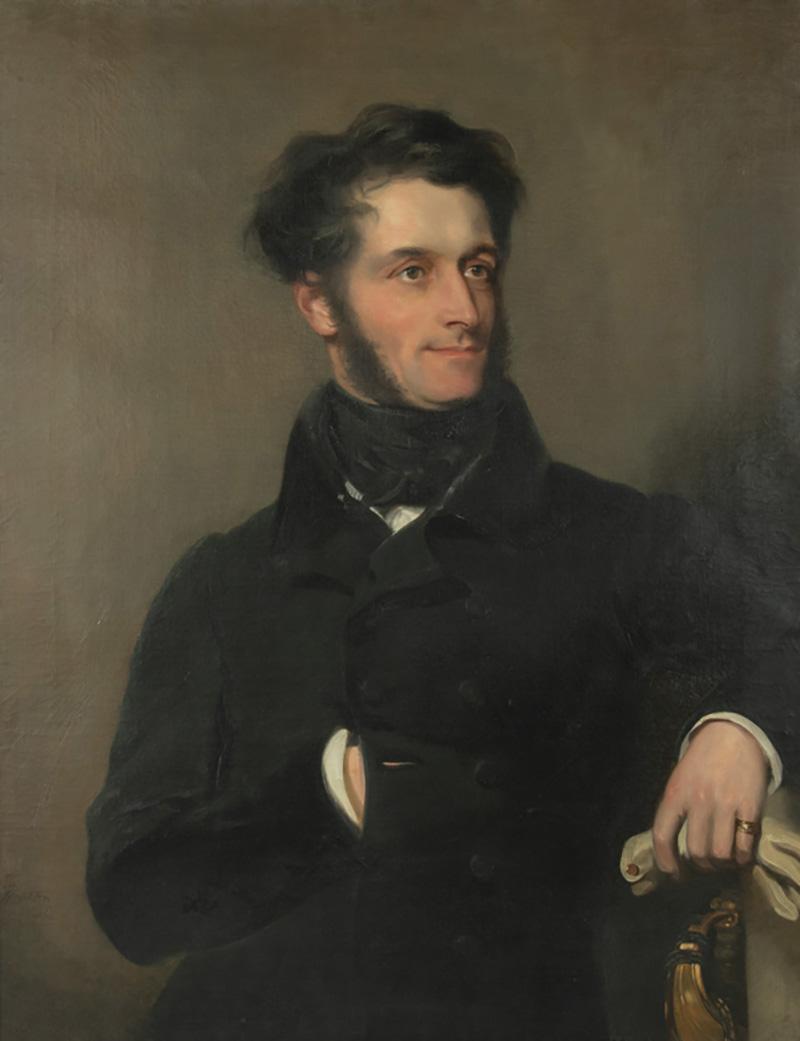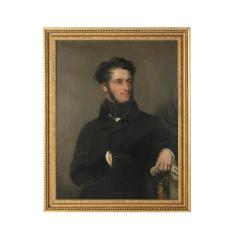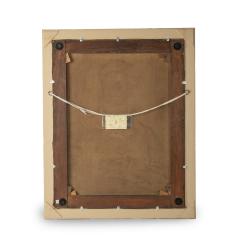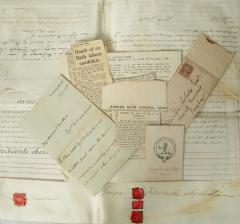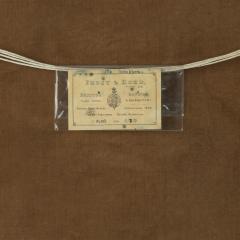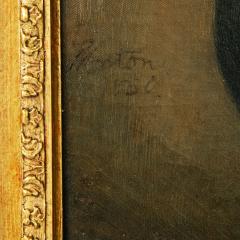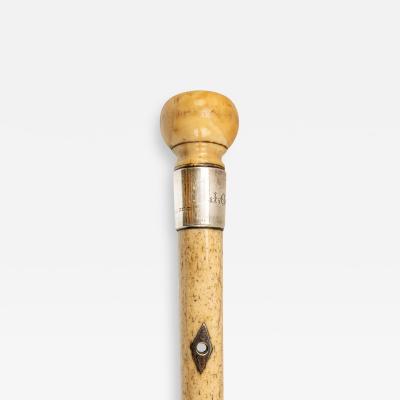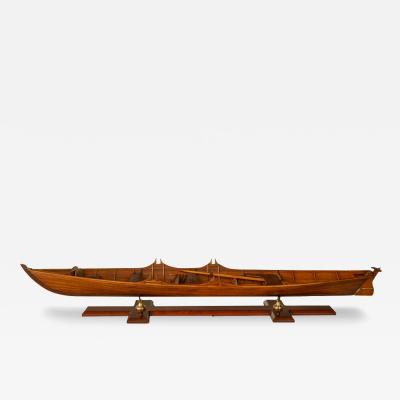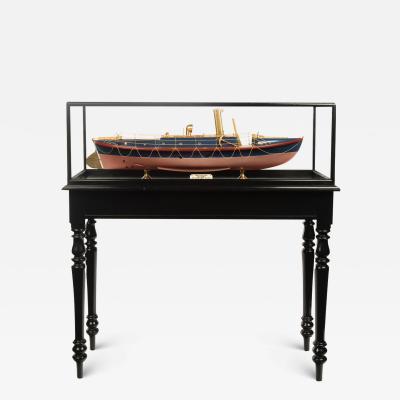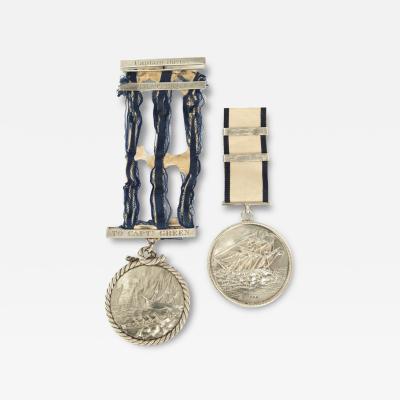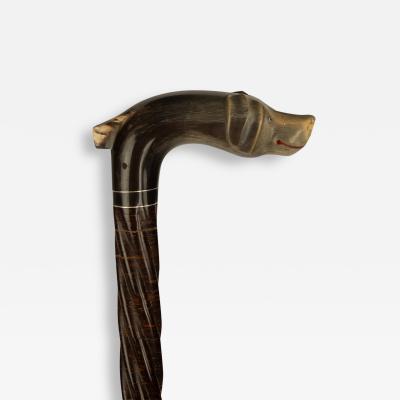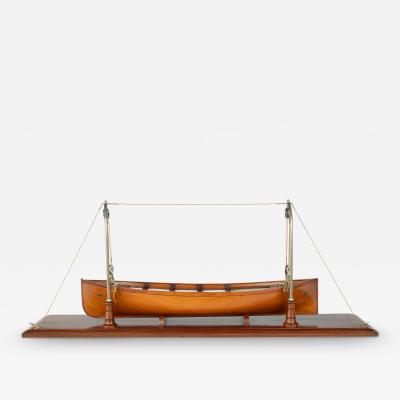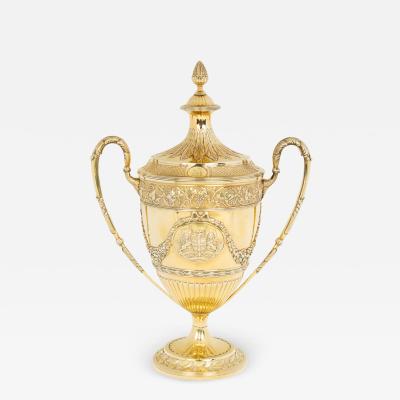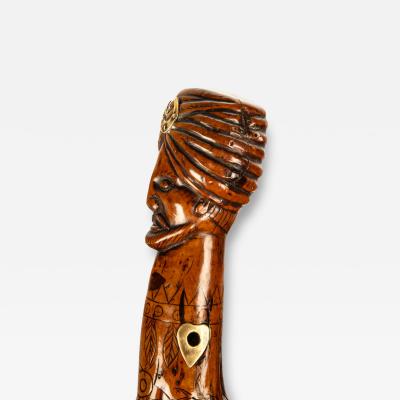Andrew Morton R. A.: Captain George Treweeke Scobell, 1840
-
Description
This oil on canvas half portrait shows a bearded Capt. G.T. Scobell looking to his left and wearing a black frock coat with a high collar, a white shirt and wide cravat. His right hand is tucked into the front of his coat while his left hand wears a signet ring and holds a tan leather glove. Signed and dated ‘A Morton, 1840’ and with a paper label for Frost & Reed on the reverse. There is also a bundle of Scobell family documents. English, 1840.
Provenance: Private collection by descent.
Captain George Treweeke Scobell (1785-1869) joined the Royal Navy as a midshipman aged 12. Initially, he served under Captain Pender on the coast of North America, and subsequently in the expedition to Copenhagen under Sir Clyde Parker and Lord Nelson in the blockade of Cadiz. He was made lieutenant in 1804, and commander on 1st February 1812. In 1823 he invented and submitted a ‘Dissecting Paddle-wheel’ to be worked by winches which, with only 20 men operating them, produced a speed of one and a half knots. They were used on Sir William Parry’s expedition to the North Pole. Scobell retired from the Navy in 1843 and was elected Liberal M.P. for Bath in 1851. In the later stages of his life he was a magistrate for Somerset and High Sheriff in 1863. In his will his beneficiaries were his nephews, Barton Laud John Scobell (see following pages) and Sandford George Treweeke Scobell.
In 1854 Captain Scobell put a motion before the House of Commons that an ‘Order of Merit’ should be awarded to ‘persons serving in the army or navy for distinguished and prominent personal gallantry…. and to which every grade and individual from the highest to the lowest…. may be admissible’. The medal was named the Victoria Cross (V.C.) and awarded for valour ‘in the presence of the enemy’ for actions in the Crimean War (1853-1856). The first, together with a pension of £10, was awarded by Queen Victoria in 1857. Subsequently, the V.C. has remained the highest and most prestigious decoration of the British honours system. There have only been 1,354 recipients (three of whom have won it twice).
Andrew Morton (1802–1845) was an English portrait-painter, born in Newcastle upon Tyne, who studied at the Royal Academy, gaining a silver medal for his first exhibit in 1821. Once established he had many notable commissions, including William IV in National Maritime Museum, Greenwich, the Duke of Wellington in the Wallace Collection and several in the National Portrait Gallery. - More Information
-
Dimensions
W. 32.25 in; H. 42 in; W. 81.92 cm; H. 106.68 cm;
Message from Seller:
Wick Antiques was established by Charles Wallrock in the early 1980s. Having grown up in the Antiques world Charles developed an extensive wealth of knowledge. Starting out as a ‘man with a van’ he quickly gained a good reputation and embarked on a longstanding relationship with Harrods. He was later joined by his wife, Caroline Wallrock. Caroline having completed a Persian degree, went on to study at Christie’s fine art and then joined Sotheby’s specializing in Islamic and Japanese works of art















